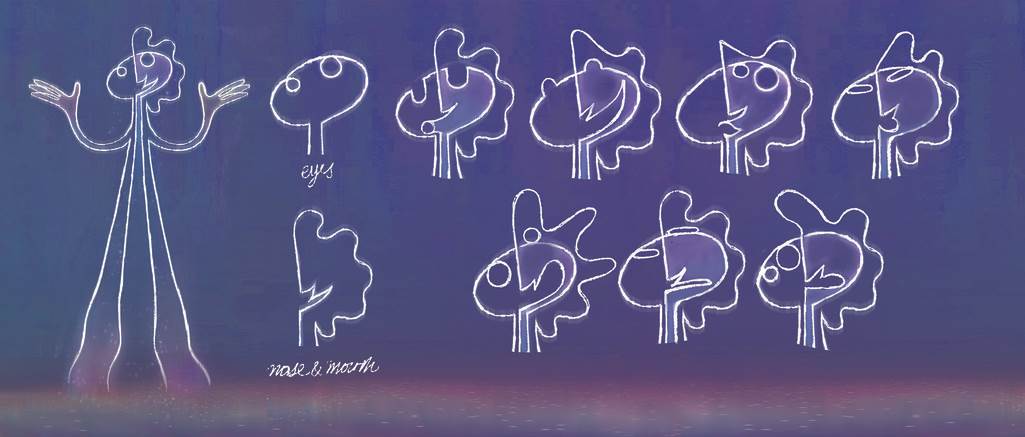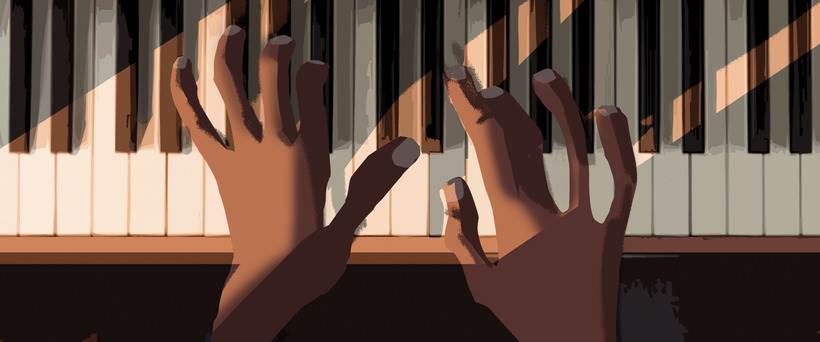Animating Life into “Soul” – Behind-the-Scenes of Pixar’s Upcoming Film
After four-and-a-half years of development and 73,611 storyboards, Pixar’s Soul is ready to greet the world this December 25th on Disney+. Early in the fall, I had a chance to learn more about the film from the talented team behind it, including the rare opportunity to sit down with three of the immensely creative individuals from Pixar’s award-winning animation department.
Supervising Animators Bobby Podesta and Jude Brownbill were having coffee in the atrium of the Steve Jobs Building at Pixar Animation Studios in March when they were told that everyone was going to have to grab their stuff and continue working from home. “We looked at every shot that was going, everyone rallied around,” Bobby Podesta recalled. “It was just this collaborative approach from all the animators to get their work up, get it in front of each other, do some work, do some fixes. We all grabbed our computers, ran home, we’re all plugging in, texting each other. And the next day, we’re continuing to make that movie.” For Jude Brownbill, having production work to continue with also helped her peace of mind. “In what was and still continues to be a quite strange and scary time, having the film to focus on was actually quite a good thing for me, others perhaps, to know that I’m at home but I have my computer to focus on this.”
“It was really inspiring just to see how we adapted,” Animator MontaQue Ruffin explained about collaborating with Bobby, Jude and all of his colleagues remotely. “Nothing can replace the human interaction quality that’s so ingrained in our day-to-day life, but there is something nice about knowing that we have our computers, we meet, we work on these films. I’m very privileged and thankful that in the midst of all this, that I can still have a way to connect and communicate with my colleagues and keep my focus on something that is going to bring some good, bring some light into this world.”
Soul brought with it some new challenges for the animation team. The lead character, for example, takes on multiple forms in the film, including his human and soul equivalents. “I think a lot of it came down to the design,” Jude shared when asked about how they dealt with animating the same character with in multiple forms. “When Joe the soul version was being designed, we always had that version, human Joe, next to him so that we could sort of see are the proportions similar, are the features kind of the same. If you notice, they sort of have the same hat and glasses. In the human world Joe is very tall, he was always designed to be a sort of very tall character so that he would almost look out of place. But in the soul world, the proportions of his body are actually very different so his legs are very short, sometimes we had trouble getting him across the screen because his legs are quite tiny so we took some liberties there. But across both worlds, I think the main way of keeping that consistency was just to try and make those authentic acting choices that lean heavily on Jamie Fox’s performance and who the character of Joe became. And so however he responded or however we chose to make him move or gesture, it always felt like Joe regardless of which body he was in.
The shapeshifting counselors brought with them a different kind of challenge, but more than just technical, the team had to clearly define the rules of these characters. “It’s true that there’s a complexity to technically how we’re doing it, but there’s a complexity and maybe even a bigger one to the rules we’re creating to give them form,” Bobby Podesta explained. “Because when you have a character that can become anything, you can go down a road where you don’t know what it is. A lot of the complexity was in trying to define them. Who they were or how they held themselves, how they move, how they move from one thing to another and a different shape and that took a lot of exploration, a lot of tests and it’s like building a world, a language, a style, so to speak. Once we had that, then the animators can really stand on the shoulders of it and create very specific performances.”
Another technological advancement was the automation of what look like hand-drawn lines that appear around silhouettes of a soul’s fingers and help create expressions like eyebrows, dimples, and facial lines. “For the most part, the automation was so good that it just worked out of the box,” Jude Brownbill shared, although the animators would occasionally make adjustments. “It was just tweaking like a dimple line or a furrow line.”
As for the look of the world, Pixar artists looked back in time to figure out what the soul world would look like. “We were looking for something simple, geometric,” Director Pete Docter shared. “We looked at some photos of the World's Fair from the '30's and all through the '60's, which were a great influence as well. So this was largely the art department playing around and then in concert with our technical group to make these places… When a character goes in [a building], it moves, it mutates in some way that infers that it gives something to the soul. So when you see it, you can see the characters moving and then it sort of unwraps and then the character comes out.”
While the soul world looks like something that could only come from Pixar Animation Studios, the filmmakers looked outside the company for inspiration when it came to Joe Gardner’s New York City and how to light it. “Bradford [Young] definitely contributed a lot to the look of this film, particularly the stuff that takes place on Earth,” Writer and Co-Director Kemp Powers shared. “I'd say probably about half the film takes place on Earth, and this is the first [Pixar] film not just with a Black protagonist, but there's a whole range of different Black characters with different skin tones, so there was a large learning curve, I think, for our lighting team. And Bradford came in and consulted with them on a number of occasions. He has a very unique look to a lot of the films that he shoots. He's really excellent at lighting Black skin and particularly using a lot of single source, natural lighting. So what I love about the look of Soul in the human world is that it looks so different than any Pixar film that's come before it in the human world, and a lot of that is due to the lighting in the film. And a lot of that credit goes to their consulting and working with Bradford, so he was a big part of that.”
You can see Joe Gardner’s New York City, “The Great Before,” and all of the technological advancements and hard work Pixar artists poured into Soul when it arrives on Disney+ this December 25th.




